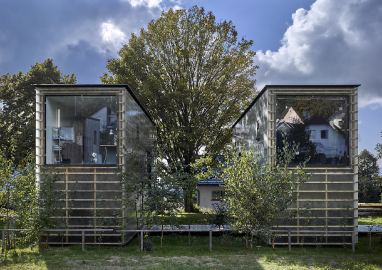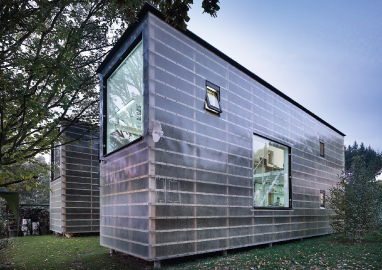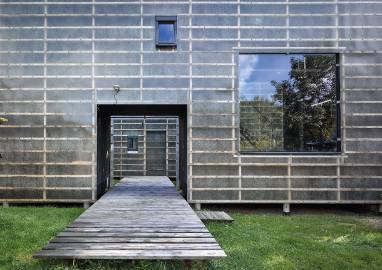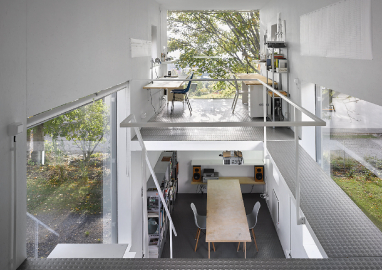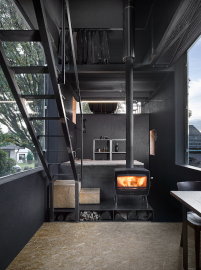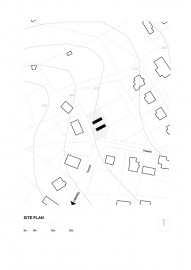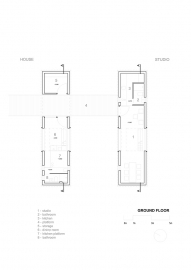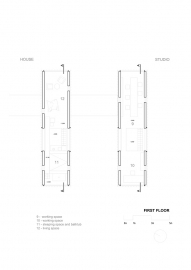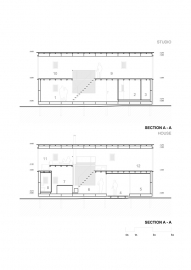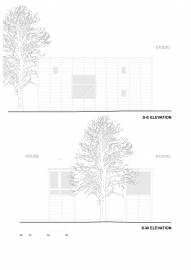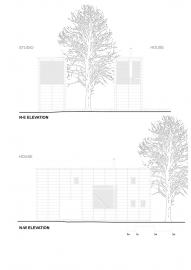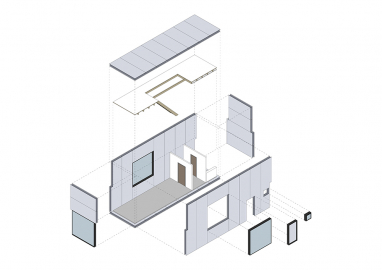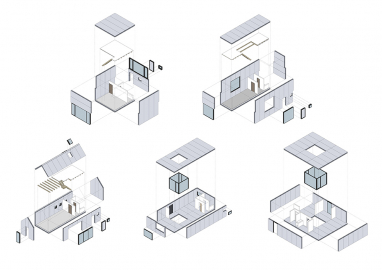Zen Houses - Studio and House
The philosophy of these houses is based on absolute simplification of the definitions of housing and development. The slight contrast between the home and office proves that the system could be adaptable to a variety of individual solutions and, in this respect, fulfills the concept of a building typology.
As to the exterior, both volumes separate three external living areas - public, semi-public and private. Thanks to the site composition and large glazing of strategic vistas, the neighbouring landscape is always approachable. The interior does not look confined even though the external width of the house is 3 meters; the inner space flows towards vistas. The residents have mutual visual contact even between houses and the inner atrium becomes another room for them. The experimental character of the houses was the conceptual starting point. Yet the deliberate austerity of the achieved forms definitely brings new lifestyle qualities to an environment built in this way. All typical assumptions about living and working are re-evaluated and brought together.
Goal was to create experimental buildings – atelier and house. Intended saving measures were to verify not only simplification of construction methods but primarily way of living. From the outside almost identical materials and on the inside differing in their purpose are supposed to outline opportunity for individual variability of this concept building type. This project could easily be considered a prototype of its kind, adaptable to programme, site or scale. A system therefore, which can be changed to suit the challenging needs of the individual, the family or the city. The perimeter of the houses determines the inner space, which is thus disencumbered of all attributes of a classical house. However, well-balanced proportions enable a unique spatial experience. The facade should appear as a fine transparent layer allowing the viewer to sense the mass of the house. The severity and simplicity of these objects are inspired by contemporary Japanese architecture.
According to the briefs, the creation of a typology of simple residence houses by means of basic production modules called SIP (Structural Insulated Panel) was required. Entire structure of the building is composed of manufactured assortment of system panels, i.e. peripheral walls, roof and floors; embeded ceiling structure is made from wooden components, as is second roof layer; houses are based on concrete micropylons; fibreglass facade is carried by wooden grate; floors implement industrial coin rubber; inner walls have coating and entry to the second level is provided by delicate metal staircase. The project takes industrial components and adopts a super efficient but joyful attitude to their use and integration – an agricultural cladding product of translucent acrylic panels fixed to a softwood subframe made graphic though it's visual detail. According to the finishing from reduced and basic palette of materials, this projects demonstrates that the buildings do not need to be the most expensive.

